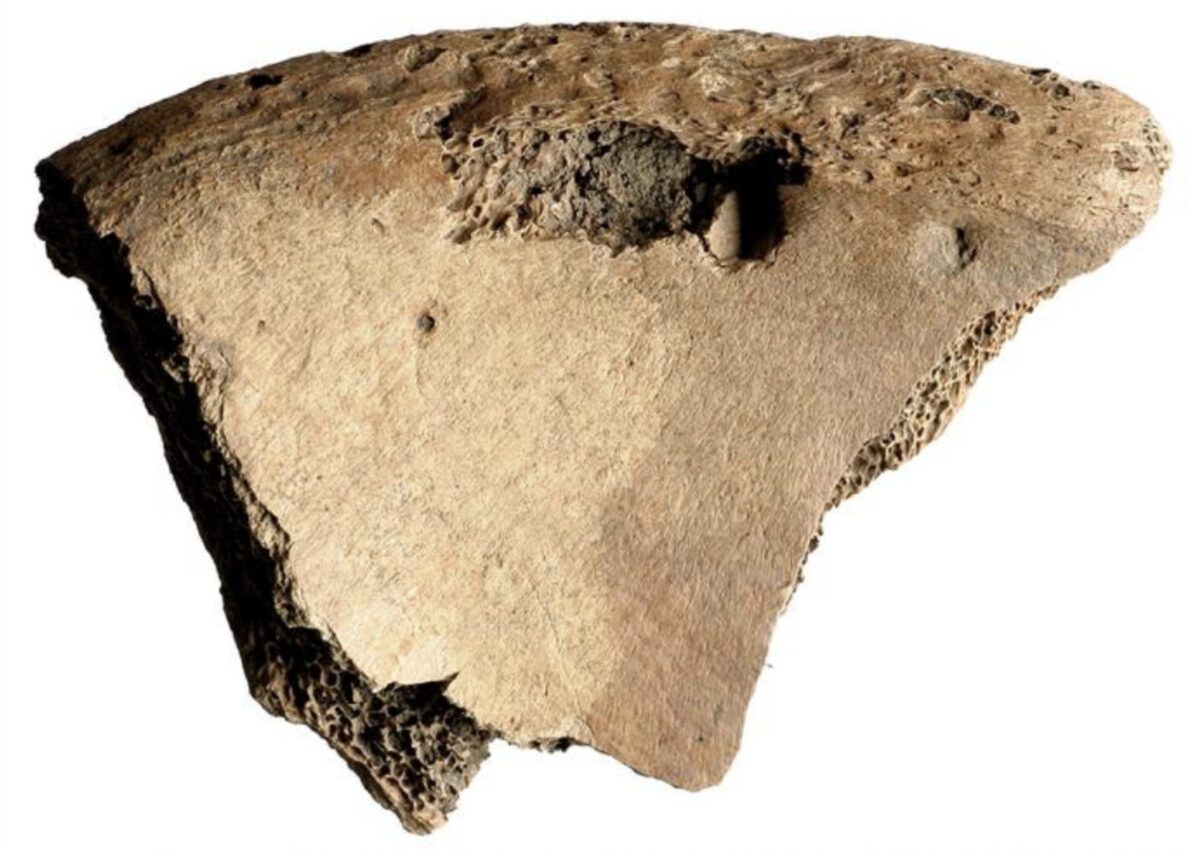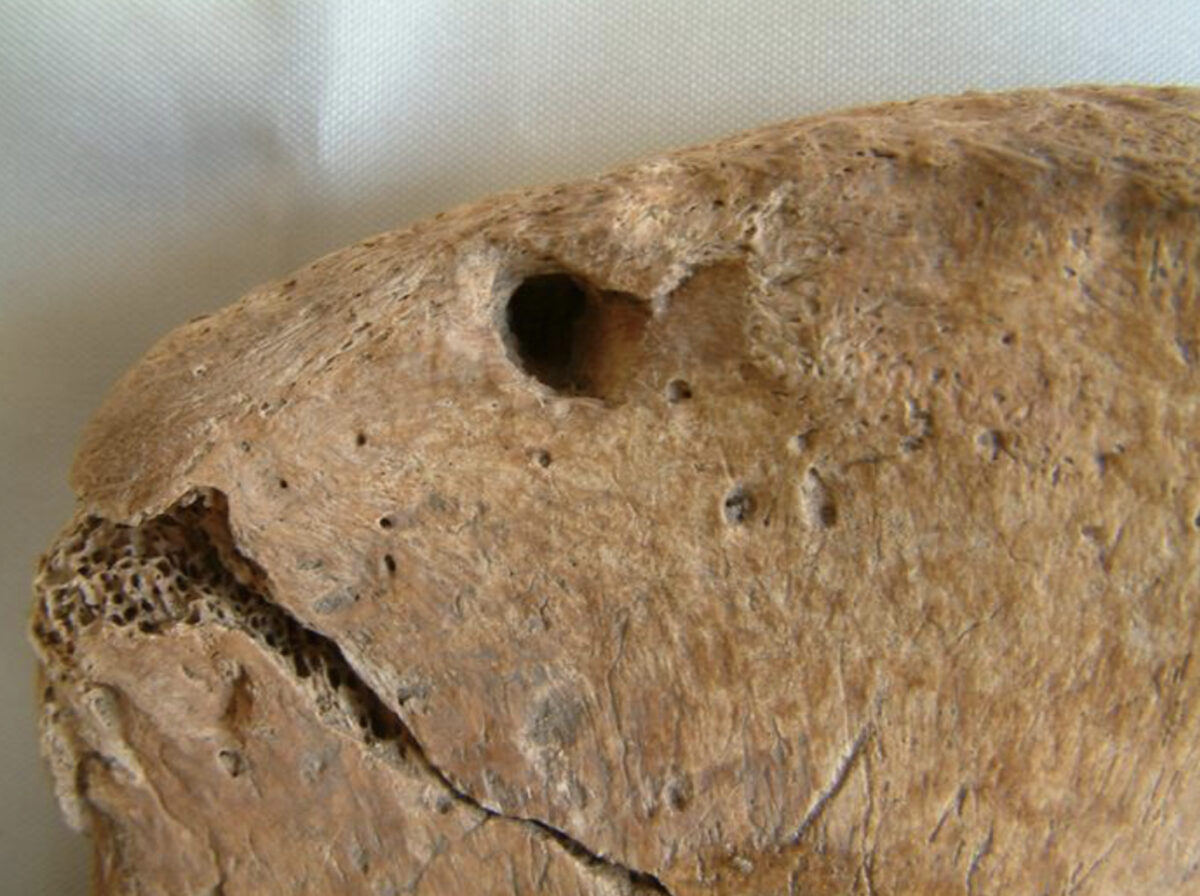
Depiction of gladiator fighting lion in ancient Roman battle. (© Serhii - stock.adobe.com)
In a nutshell
- Scientists discovered bite marks from a lion on a human skeleton in Roman York, providing the first physical evidence of human-animal gladiatorial combat in Britain
- The victim was a young adult male who had been decapitated, suggesting he may have been executed or died in a gladiatorial spectacle
- The discovery reveals the extraordinary logistics involved in transporting dangerous African predators to remote parts of the Roman Empire for entertainment
MAYNOOTH, Ireland — Blood, sand, and death – for Romans, there was no better entertainment than watching gladiators fight exotic animals in arenas across their vast empire. While Roman writers described these spectacles in graphic detail, researchers have never discovered physical proof suggesting that humans actually faced off against lions and other big cats in Britain – until now.
A team of forensic experts and archaeologists has identified bite marks from a large cat – most likely a lion – on a human skeleton discovered near York, England. The find represents the first tangible evidence of ancient Roman human-animal combat discovered in Britain.
The Gruesome Discovery at York’s Ancient Cemetery
The man’s remains came from Driffield Terrace, a Roman cemetery that has long baffled experts. Most burials there were males between 18-45, and roughly 70% had been decapitated – far exceeding the typical 5-6% decapitation rate in Roman cemeteries.
Using 3D scanning technology, researchers documented unusual marks on the victim’s pelvis. The punctures and depressions matched patterns typical of large cat feeding, with some holes nearly 6.5mm in diameter and 5mm deep.
The victim, aged around 30, had been decapitated with a single clean cut between the second and third cervical vertebrae, delivered from behind. The lion marks weren’t killing blows – the pattern indicates the big cat was scavenging his body after death.
“The shape is entirely consistent with documented cases of large cat bite marks,” the researchers note in their findings, published in PLOS One. “The location solely on the pelvis suggests that they were not part of an attack per se, but rather the result of scavenging at around the time of death.”

Exotic Animals in Britain: An Imperial Power Play
While archaeologists have found evidence of amphitheaters throughout Roman Britain, including the likely remains of one near York, they’ve never before discovered physical proof that exotic animals like lions were brought to these far-flung provinces for combat spectacles.
The transportation of dangerous predators across thousands of miles required extraordinary planning and resources. Large cats needed specialized cages, trained handlers, adequate food supplies, and carefully planned routes by both ship and wagon.
For York’s Romans, seeing an African lion would have been an astonishing spectacle. Such events demonstrated imperial power that could command resources from across three continents, bringing exotic animals to even the remotest parts of the empire.

North African Connections and Cultural Links
The evidence connects York to North Africa through multiple channels. The city’s sixth legion had documented recruiting ties to North African regions, and these connections strengthened during Emperor Septimius Severus’ reign – a North African-born ruler who spent time in York during the early third century.
The discovery helps validate other archaeological evidence of animal spectacles in Britain, including mosaics and artwork depicting exotic beasts in combat. A famous mosaic from Rudston, in Yorkshire’s East Riding, shows armed figures alongside animals including a lion, leopard, bull, and stag. Two of the animals are even captioned with stage names—”Leo Flammefer,” the “fiery lion,” and “Taurus Omicida,” “Killer the bull.”

The researchers note that isotopic analysis of the skeleton suggests the man may have originated from a warmer climate than Britain, possibly from southern Europe or North Africa. This aligns with other evidence from the cemetery, which contained individuals from diverse geographic origins across the Roman Empire.
These bite marks in ancient bone provide concrete proof that exotic animal combat wasn’t just Roman propaganda – it was real entertainment that reached even the empire’s chilly northern frontier.
Paper Summary
Methodology
Researchers examined a male skeleton (labeled 6DT19) from Driffield Terrace, a Roman cemetery near York, England. The skeleton showed unusual lesions on both sides of the pelvis. The team used HP 3D structured light scanner Pro S3 to document and analyze these lesions in three dimensions. They then compared the marks with known bite patterns from various animals, particularly large cats, using comparative material from previous research with zoo animals. This allowed for detailed measurement and comparison of the shape, depth, and arrangement of the wounds.
Results
The analysis revealed that the lesions on the skeleton’s pelvis were consistent with bite marks from a large felid, most likely a lion. The marks showed characteristics typical of large cat teeth, including curved impressions and puncture wounds up to 5mm deep. The location of the marks suggests the body was scavenged rather than the person being killed in direct combat. The individual had also been decapitated, with a cut between the second and third cervical vertebrae delivered from behind. Isotopic analysis indicated the man may have originated from a warmer climate than Britain.
Limitations
The researchers note that while they considered other explanations for the lesions, including weapon injuries or taphonomic damage, these alternatives were determined to be unlikely based on the appearance and characteristics of the marks. The specific context of how the individual encountered the lion remains uncertain—it could have been during gladiatorial combat, a public execution (damnatio ad bestias), or another type of animal spectacle. Additionally, while the study identifies the most likely animal as a lion, other large cats couldn’t be entirely ruled out.
Funding and Disclosures
The authors received no specific funding for this research. They declared no competing interests. The skeletal evidence is curated by the York Archaeological Trust.
Publication Information
The paper, titled “Unique osteological evidence for human-animal gladiatorial combat in Roman Britain,” was published in PLOS ONE on April 23, 2025. The lead author is T.J.U. Thompson from the Department of Anthropology at Maynooth University in Ireland, with co-authors from Cranfield University, York Archaeological Trust, York Osteoarchaeology Ltd, University of York, Durham University, and King’s College London.







